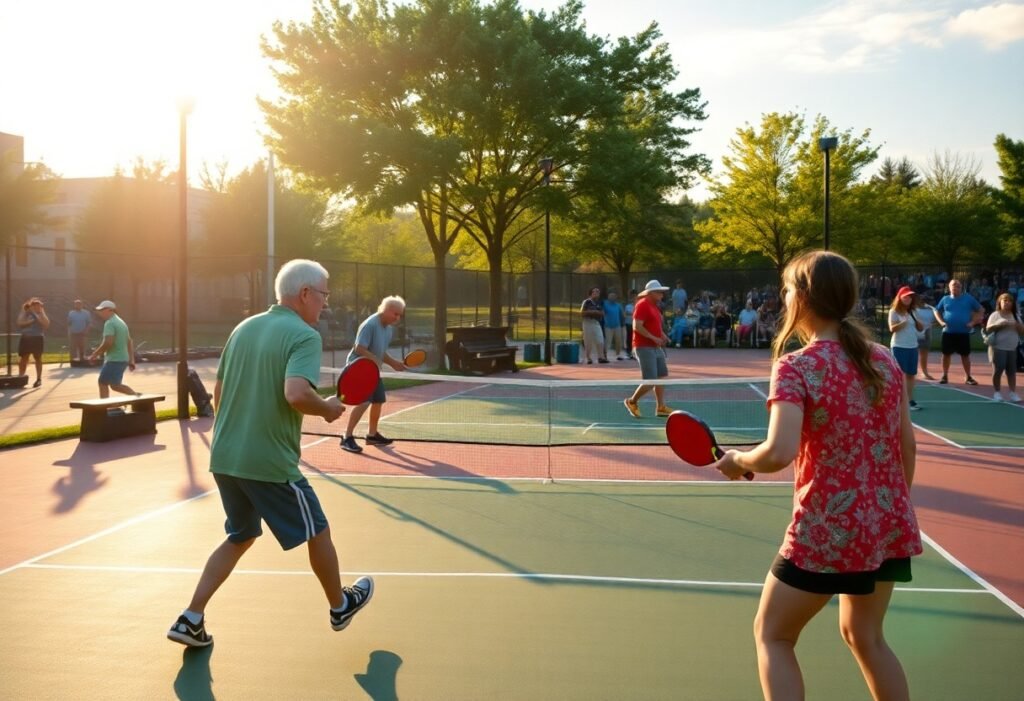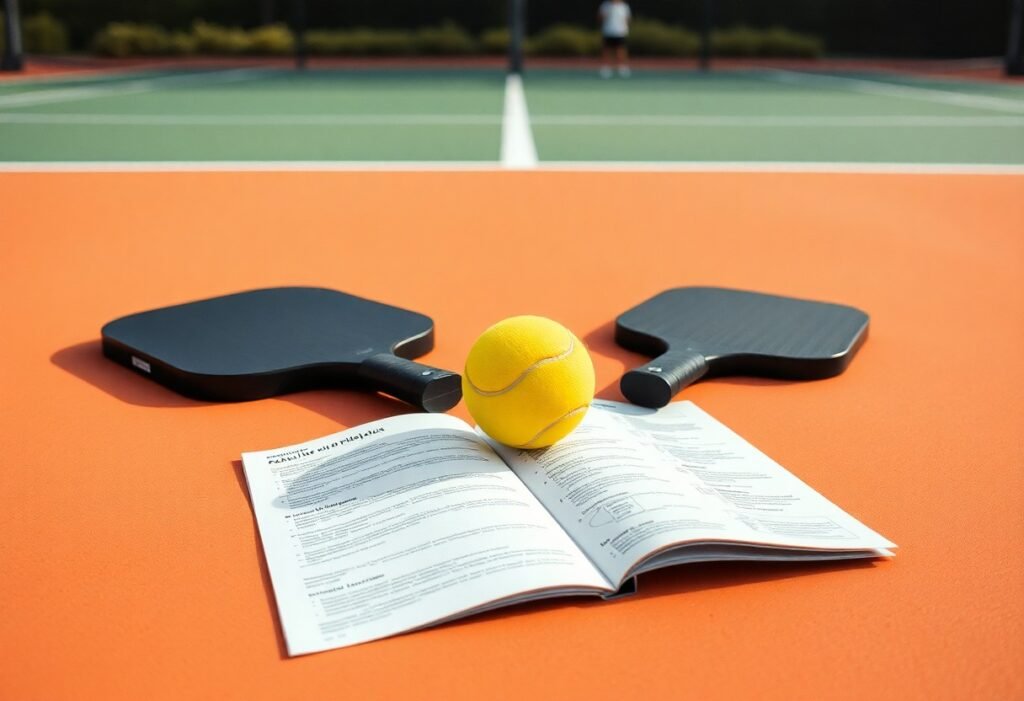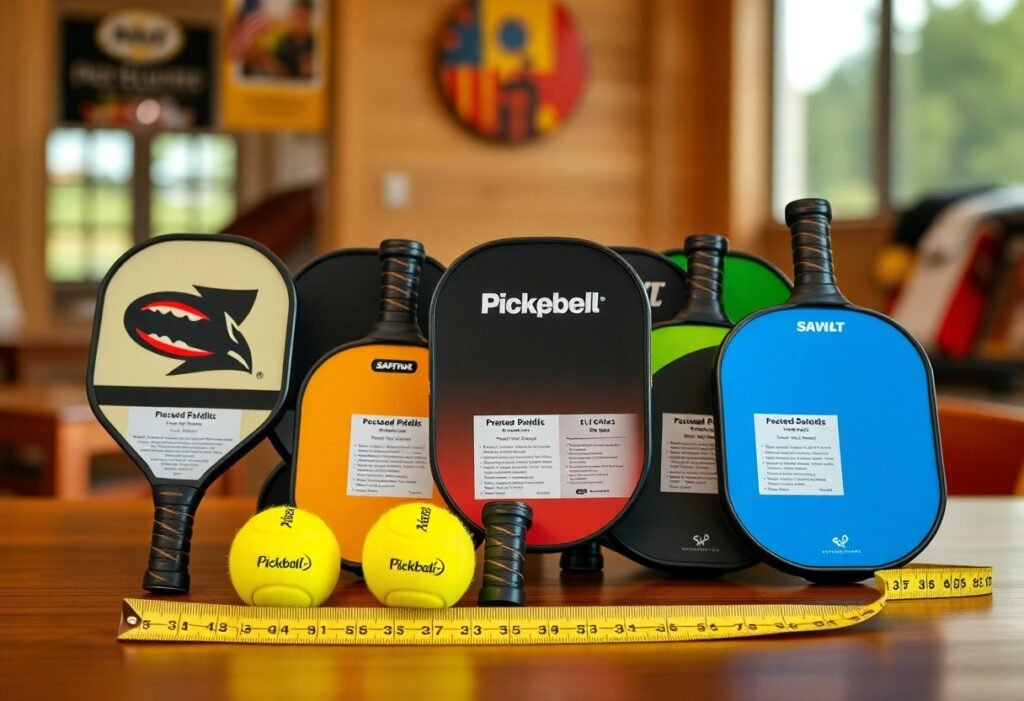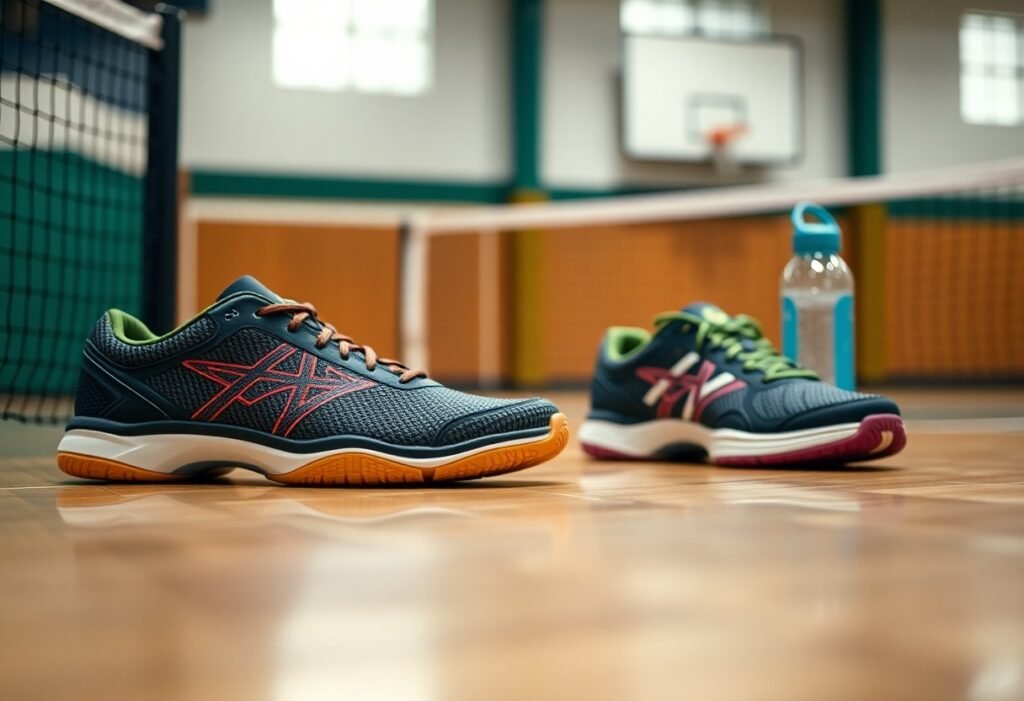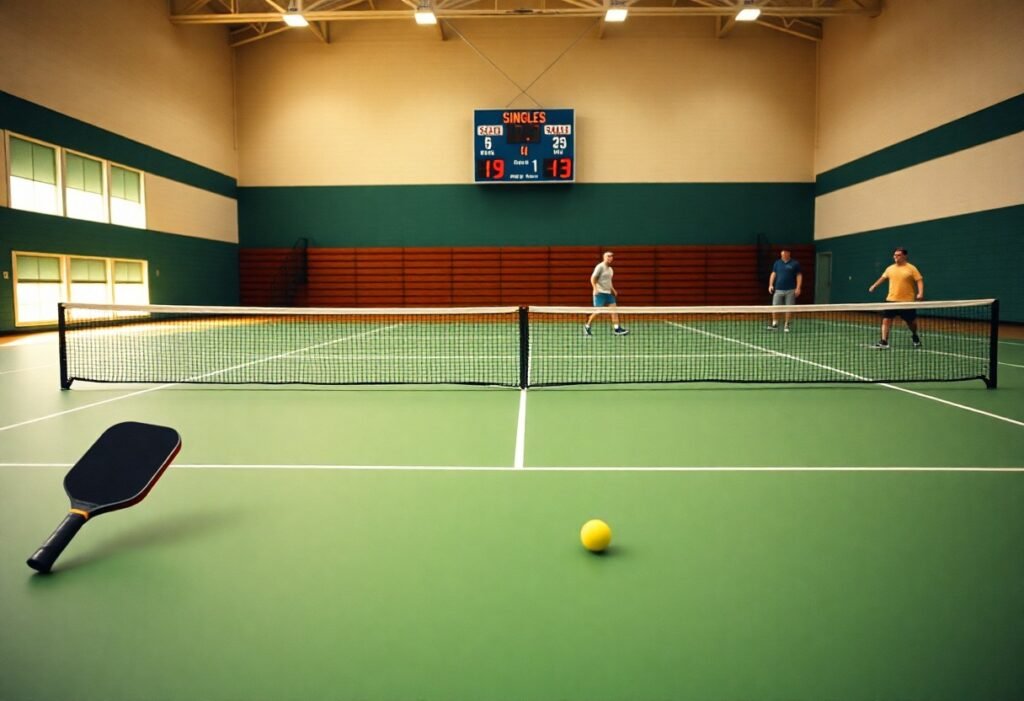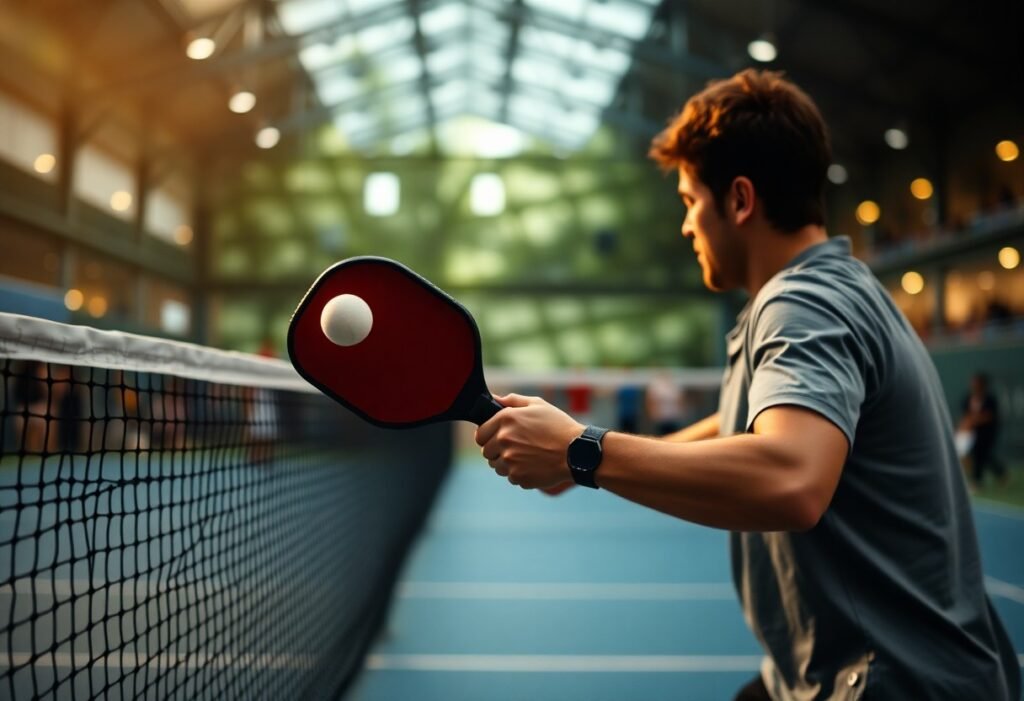Pickleball courts have specific dimensions and layouts that are imperative for maximizing your playing experience. Understanding these measurements, including the size of the court and the placement of equipment, will help you create a space that is not only enjoyable but also compliant with official standards. This guide provides you with practical tips for setting up your court to ensure optimal play, whether for casual games or more competitive matches.
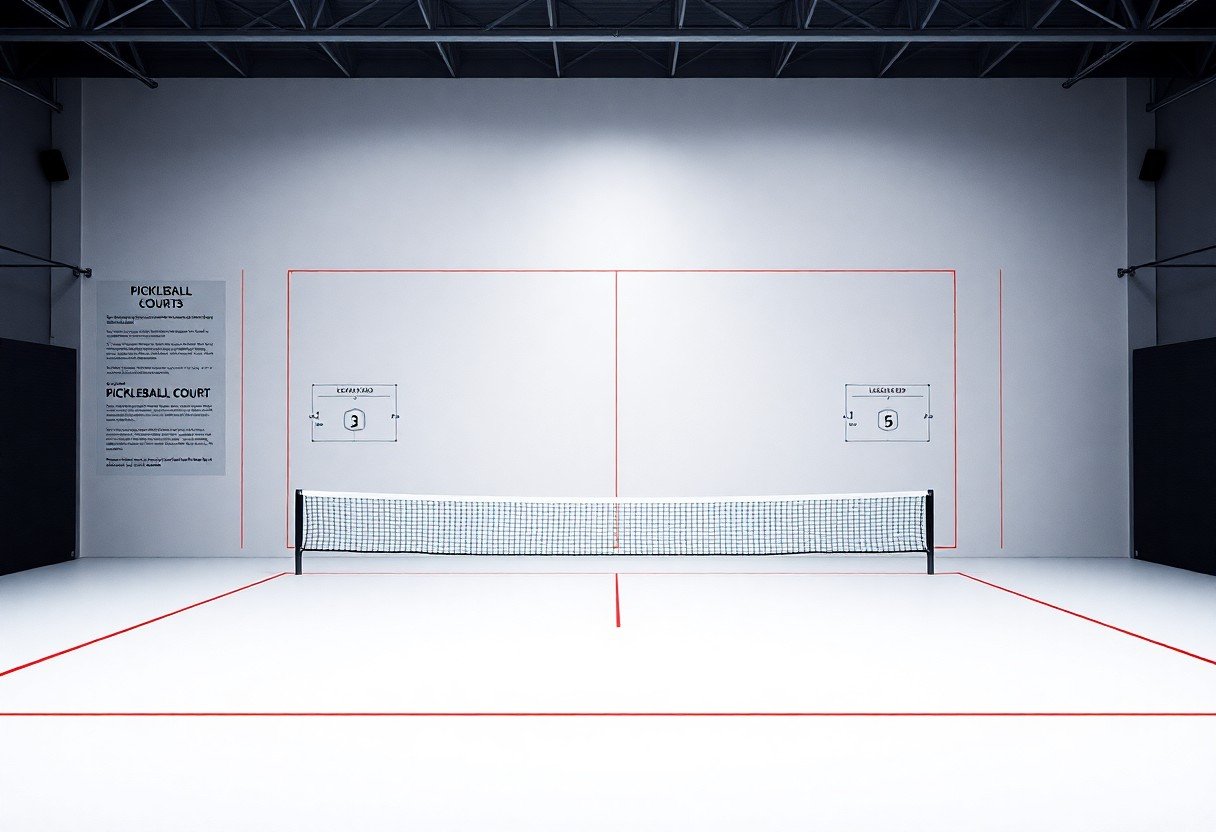
Key Takeaways:
- A standard pickleball court measures 20 feet wide by 44 feet long for both singles and doubles play.
- The non-volley zone, also known as the kitchen, extends 7 feet from the net on both sides.
- Proper setup includes a 10-foot clearance around the court for optimal gameplay and safety.
Understanding Pickleball Court Dimensions
Official Size of a Pickleball Court
The official dimensions of a pickleball court are 20 feet wide and 44 feet long for both singles and doubles play. The court is divided by a net that stands 36 inches high at the sidelines and 34 inches at the center. This uniform size ensures that all players have the same playing experience, regardless of the level of competition.
Comparison to Other Court Sports
When comparing pickleball court dimensions to other sports, you’ll find it’s smaller than a tennis court, which measures 36 feet wide and 78 feet long, and larger than a badminton court at 20 feet wide and 44 feet long. Pickleball’s dimensions allow for quicker rallies and more dynamic gameplay, accommodating the strategic elements of both paddle and racquet sports.
Comparison to Other Court Sports
| Sport | Court Dimensions |
|---|---|
| Pickleball | 20′ x 44′ |
| Tennis | 36′ x 78′ |
| Badminton | 20′ x 44′ |
The smaller size of a pickleball court enhances its accessibility, making it easier for players of all ages and skill levels to grasp the game. With less distance to cover, you can engage in longer rallies and keep the action high-paced, which is one reason for its rapid rise in popularity across recreational and competitive landscapes.
Marking Specifications and Court Lines
Proper marking on a pickleball court is vital for gameplay. Lines must be 2 inches wide and chalk or paint can be used for durable, clear boundaries. The court is marked with specific areas including the non-volley zone (kitchen) and service areas, which play a significant role in strategy during matches.
Attention to detail in marking fosters a fair playing environment and helps avoid confusion during matches. The non-volley zone, located 7 feet from the net, is vital for preventing players from spiking near the net, which adds a strategic twist to your game while ensuring that everyone adheres to the same standards.

Layout of a Pickleball Court
The Importance of Court Orientation
Choosing the right orientation for your pickleball court directly impacts visibility and player comfort. It is best to align the court north-south to minimize glare from sunlight, particularly during early mornings or late afternoons when the sun is low in the sky. This thoughtful orientation ensures that players can focus on the game without being distracted by bright light, enhancing overall performance.
Net Height and Specifications
The net used in pickleball is central to gameplay, with specific height requirements to maintain fairness. The net should measure 36 inches high at the sidelines and 34 inches in the center. Proper installation of the net ensures consistent play and adherence to official rules.
When setting up the net, it’s imperative to ensure proper tension, as a sagging net can influence gameplay. Using adjustable tension systems or regularly checking the height during play can help maintain the correct specifications. You can secure the ends of the net with net posts extending at least 22 inches above the ground for stability, further enhancing an even playing environment.
Design Considerations for Singles vs. Doubles
When designing your pickleball court, account for the different spatial needs for singles and doubles play. A standard court size aligns well for both formats, but proximity to sidelines and baselines varies in strategy, affecting player movement and gameplay dynamics.
For example, singles play focuses on a narrower area, emphasizing speed and agility, while doubles requires additional court coverage and strategic positioning. To accommodate this, ensure the layout allows for easy movement and accessibility across the court, potentially incorporating wider sidelines in design considerations, especially if you anticipate hosting both formats frequently.
Setting Up a Pickleball Court
Ideal Surface Materials
The choice of surface material is vital for optimal playability. You should consider using smooth asphalt, concrete, or specialized court tiles designed for pickleball. These materials provide a consistent surface with good traction, reducing the risk of slips and falls. Additionally, some players prefer outdoor surfaces like synthetic grass that offer a softer feel, making them suitable for recreational play.
Choosing the Right Location
Your chosen location affects both the functionality and enjoyment of your pickleball court. Look for a space that is flat, level, and free from obstructions like trees or power lines. Ideally, a location with ample sunlight and good ventilation enhances the playing experience.
Factors to consider include proximity to amenities and noise levels. If you can, choose a spot that is at least 30 feet away from any nearby buildings to minimize disturbances. This distance also helps to prevent wind interference during games. Additionally, you may want to consider the orientation of your court in relation to the sun to avoid glare in players’ eyes.
Required Equipment for Setup
To set up your pickleball court, you’ll need various necessary equipment. Start with court markings, a net, and paddles and balls for play. Ensure your net height is set to 34 inches at the center for official regulations.
Gathering the right tools makes the setup process smoother. For court markings, you may need chalk, tape, or paint to define the boundaries accurately. If your court will be permanent, consider investing in durable materials like vinyl tape or paint specifically designed for sports surfaces. A measuring tape and a level will also help ensure your dimensions are precise for a proper court layout.
Additional Court Features
Accessibility Considerations
When designing your pickleball court, consider accessibility features that accommodate all players. Ensure that your court meets local regulations regarding accessibility, including wheelchair-friendly access and adequate space for movement around the court. This ensures a welcoming environment that encourages participation from everyone, regardless of physical ability. For more information, check out Pickleball Court Dimensions and Layout: Everything You ….
Buffer Zones Around the Court
Establishing buffer zones around your court enhances safety and player experience. Aim for a minimum of 10 feet of clearance on all sides to allow players to retrieve balls and move freely without risk of injury from nearby obstacles. This space also facilitates proper crowd flow during busy play times.
Incorporating buffer zones not only enhances safety but also creates a more enjoyable atmosphere for both players and spectators. These areas can be used for seating, providing fans a comfortable spot to watch matches and facilitating interactions during tournaments. You’ll find that allowing adequate spacing can prevent game disruptions and minimize accidents, maintaining the flow of play.
Lighting and Amenities
Proper lighting significantly impacts your court’s usability during evening play. Invest in high-quality, bright LED lighting that minimizes shadows and provides even illumination across the entire court. Consider adding amenities such as benches, shade structures, and drinking fountains to enhance comfort and convenience for players and spectators alike.
Well-planned lighting also encourages longer playtime and can be tailored for evening tournaments or casual games. Amenities like picnic areas and restrooms can attract more visitors to your facility, promoting a vibrant community atmosphere. By ensuring your lighting is sufficient and amenities are thoughtfully integrated, you’ll create a pickleball environment that players will love while making your court a popular destination.
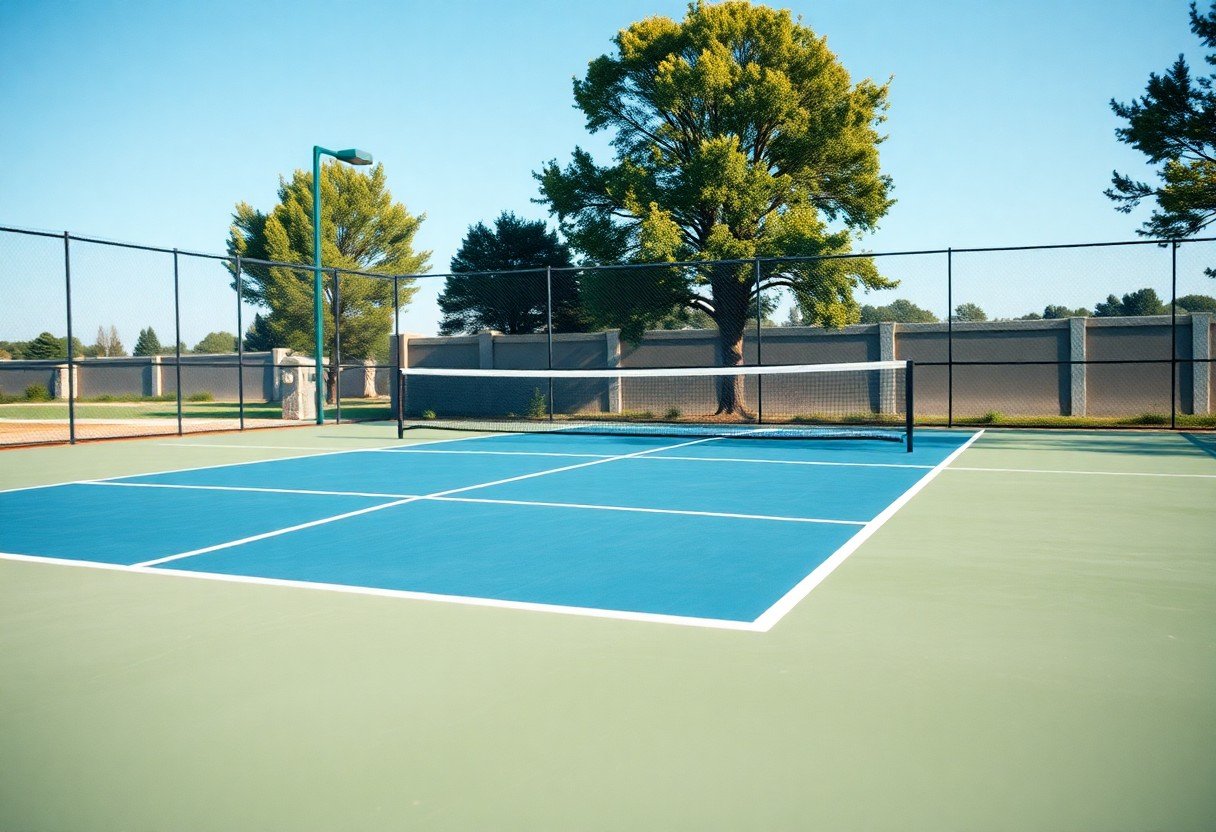
Maintenance of Pickleball Courts
Regular Upkeep Techniques
To maintain your pickleball court effectively, you should perform regular upkeep techniques such as sweeping the surface to remove dirt and debris, and using a mop with mild soap for deeper cleans. Inspect your court lines frequently to ensure they remain visible, and consider reapplying line paint as needed. Additionally, check for any accumulation of moisture or mold, which can affect gameplay and safety.
Seasonal Maintenance Checklist
Your seasonal maintenance checklist for pickleball courts should include inspection of the court surface, clearing of surrounding vegetation, and checking the net for any wear and tear. Prior to seasonal play, ensure all markings are refreshed, and clean the surface thoroughly to prevent slips and falls. It’s vital to adjust your maintenance tasks based on the weather conditions affecting the court.
Repairing Surface Damage
When addressing surface damage on your pickleball court, inspect for cracks, blisters, or uneven areas that can hinder play. Use a professional-grade court repair kit to fill in cracks and ensure a smooth surface. This not only enhances safety but also preserves the quality of play on your court.
Regularly monitor the surface for any signs of wear, especially after heavy use or inclement weather. For deeper cracks, a specialized epoxy filler may be required, while minor scratches can often be repaired with simple sealants. Keeping the surface in excellent condition helps to maintain your court’s longevity and provides a better playing experience.
DIY Pickleball Court Installation
Tools and Materials Needed
To successfully install your own pickleball court, you will require various tools and materials. Essential items include a measuring tape, chalk line, level, and a concrete mixer. Additionally, you’ll need fencing materials, nets, and proper court surface materials like asphalt or concrete. Having these items ready will streamline your installation process.
Step-by-Step Installation Guide
This guide outlines the necessary steps for completing your DIY pickleball court installation. Begin by selecting a flat area measuring at least 20 by 44 feet. Next, use the measuring tape to outline the court dimensions with chalk. Following this, prepare the surface by leveling the area and, if applicable, pouring your chosen material.
| Step | Description |
| 1 | Choose an appropriate location. |
| 2 | Measure and mark the court dimensions. |
| 3 | Prepare the playing surface. |
| 4 | Install the net posts and net. |
| 5 | Add finishing touches like lines and fencing. |
Tips for Ensuring Accuracy in Measurements
When measuring for your pickleball court, precision is vital to create a playable area. Use a high-quality measuring tape and double-check all measurements. Start by measuring from four points and adjusting as necessary to maintain proper dimensions. Being meticulous now will save you time during the final setup.
- Use a reliable measuring tape.
- Double-check all dimensions.
- Always have a second set of eyes to verify measurements.
Assume that careful measurements can significantly affect gameplay quality. Inaccurate dimensions can lead to frustration and poor experiences on your court.
For even more precision, consider using a plumb line to ensure vertical posts are straight. Mark out corner points clearly with stakes and ensure you are measuring from the correct baseline for all court lines. Align your markings with the chalk line to guarantee your dimensions are consistent.
- Use a plumb line for vertical measurement.
- Clearly mark corner points using stakes.
- Align your measurements with a chalk line.
Assume that these practical steps will contribute to a well-constructed and enjoyable playing surface for you and your friends.
To wrap up
With this in mind, understanding the dimensions, layout, and setup tips for your pickleball court will enhance your playing experience. Ensure your court meets the official size specifications of 20 feet wide by 44 feet long for doubles play, while considering proper spacing for safe play around the court. Pay attention to the surface material and accessibility to create an inviting environment. By implementing these guidelines, you can create an optimal space that promotes enjoyment and competitiveness in your pickleball games.
FAQ
Q: What are the official dimensions of a pickleball court?
A: The official dimensions of a pickleball court are 20 feet wide and 44 feet long for both singles and doubles play. The service areas are divided by a centerline and a non-volley zone (also known as the kitchen) that extends 7 feet from the net on both sides.
Q: How much space is needed around a pickleball court?
A: It is recommended to have at least 10 feet of additional space around all sides of the court to allow for player movement and safety. This means that the total area should be approximately 30 feet wide by 64 feet long.
Q: What is the best surface for a pickleball court?
A: The best surface for a pickleball court is a smooth, hard surface such as asphalt or concrete. Alternative surfaces include sport tiles or wood, but they should provide adequate grip and cushioning to prevent injuries.
Q: Can I convert a tennis court into a pickleball court?
A: Yes, a standard tennis court can be converted into a pickleball court. The dimensions of a pickleball court can be overlaid onto a tennis court, with lines painted to mark the pickleball service areas and non-volley zone. Adjustments may be required for proper net height.
Q: What are some tips for setting up a home pickleball court?
A: When setting up a home pickleball court, choose a flat, level area to ensure proper play. Use temporary or permanent lines to mark the court dimensions accurately. Set up a portable net that meets the required height of 36 inches at the sidelines and 34 inches at the center. Make sure the area is free of obstacles and debris for safety.



